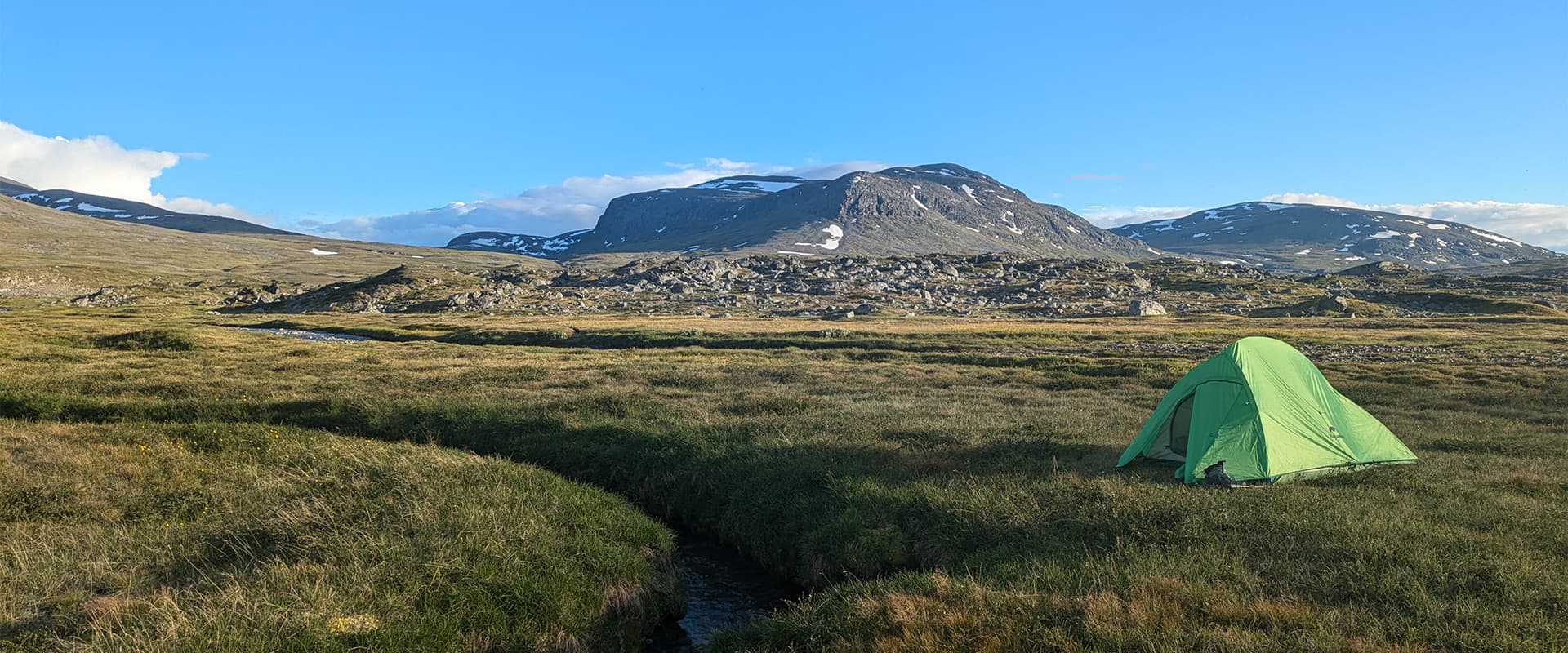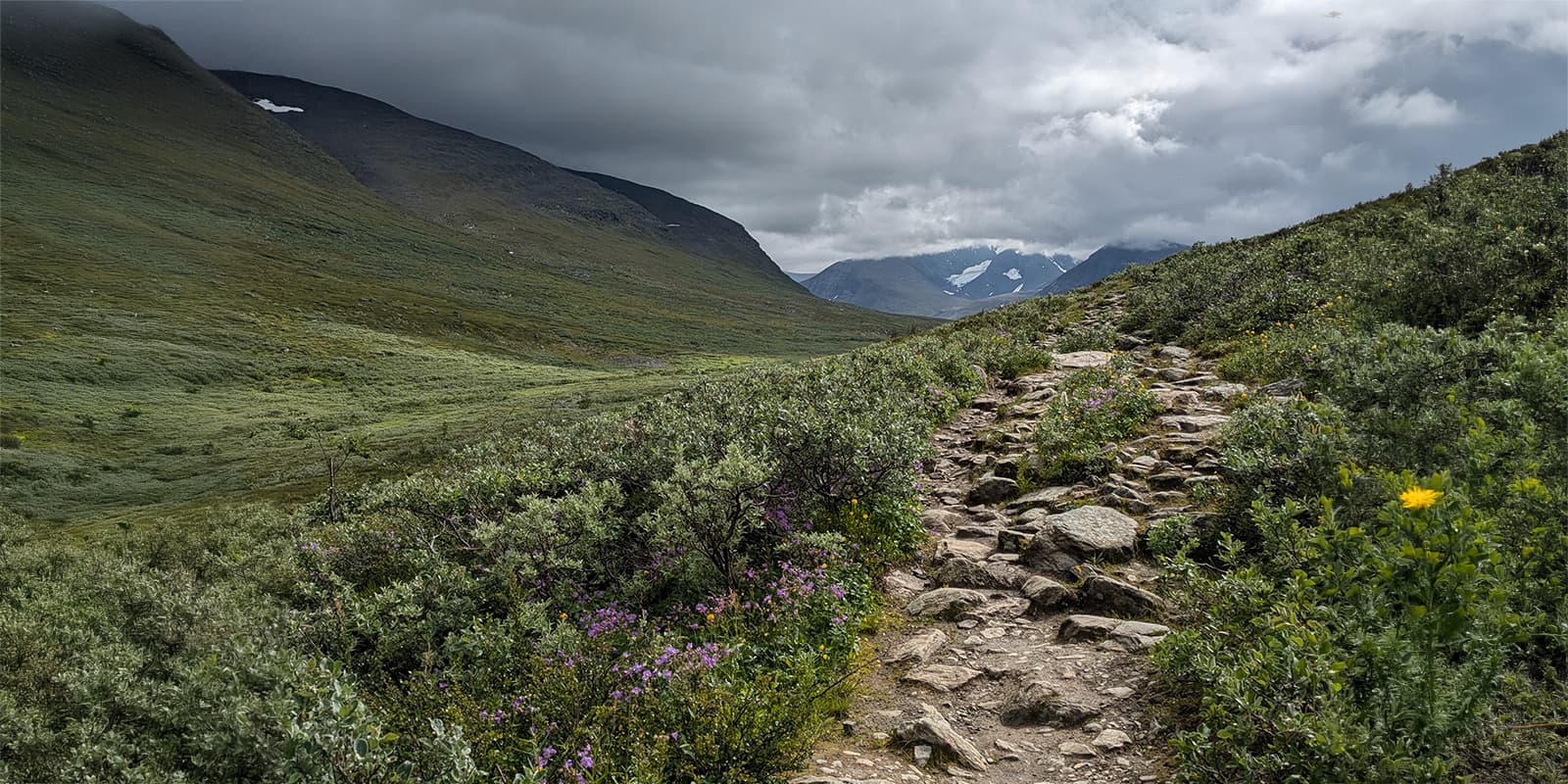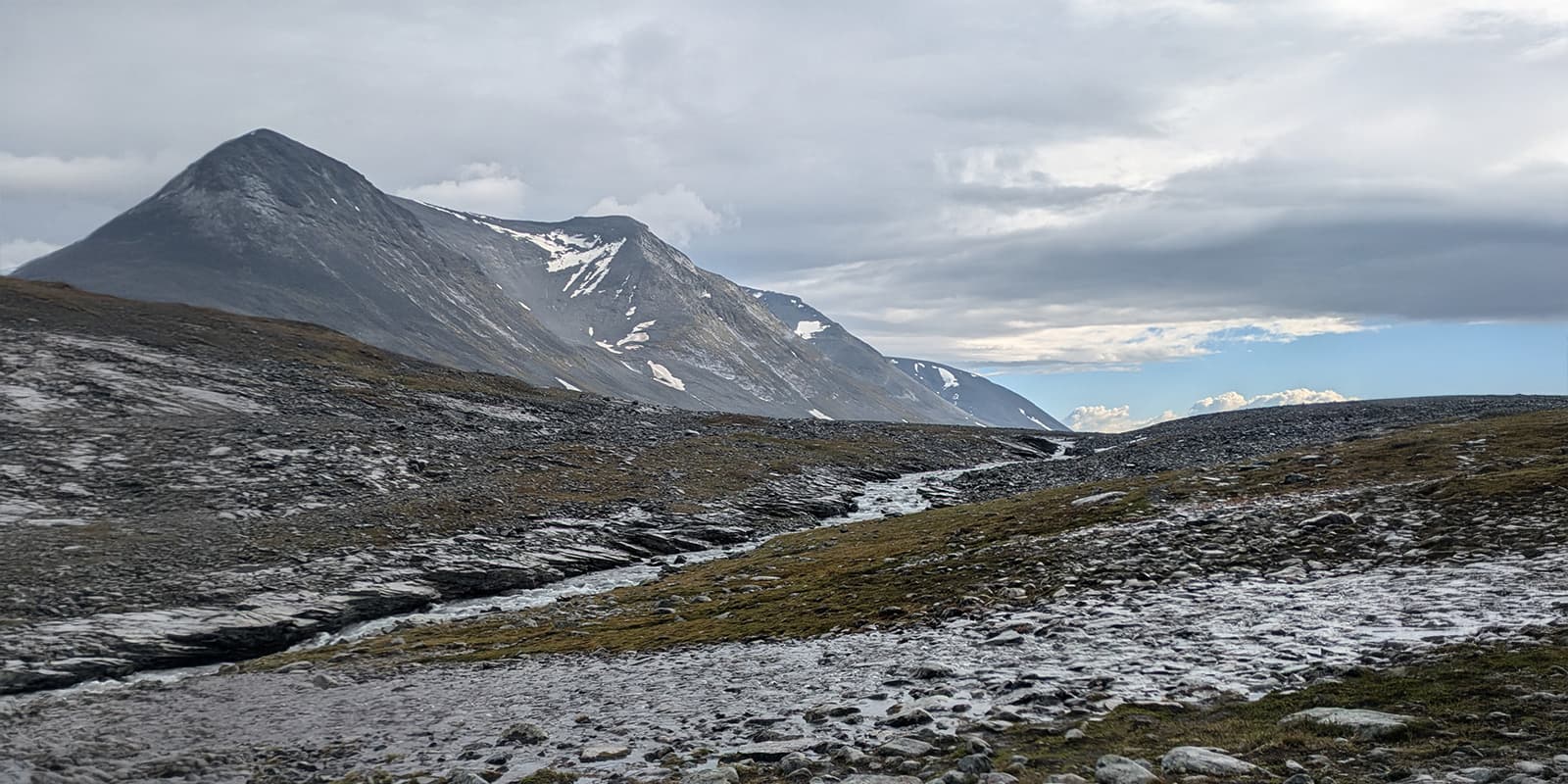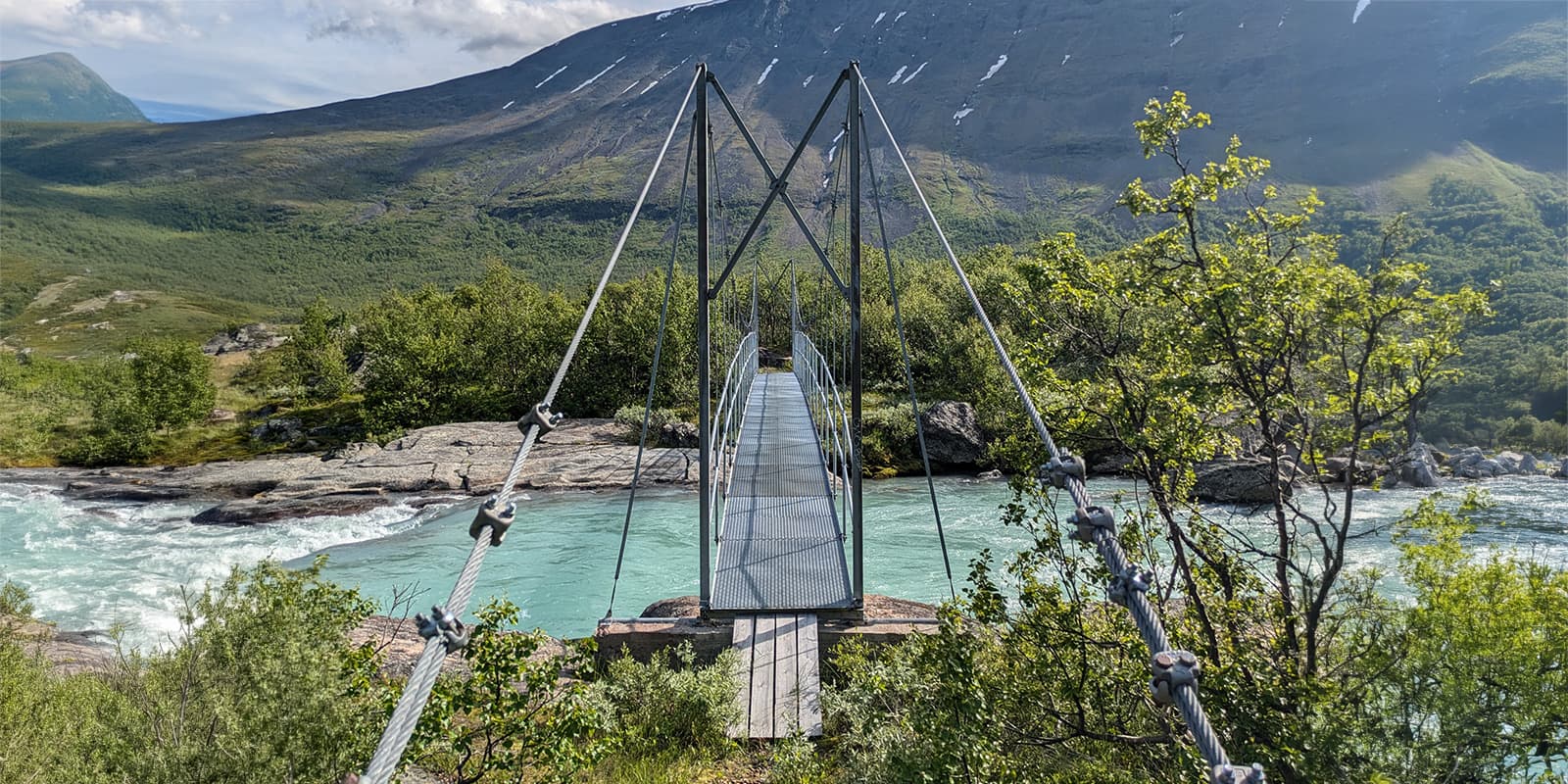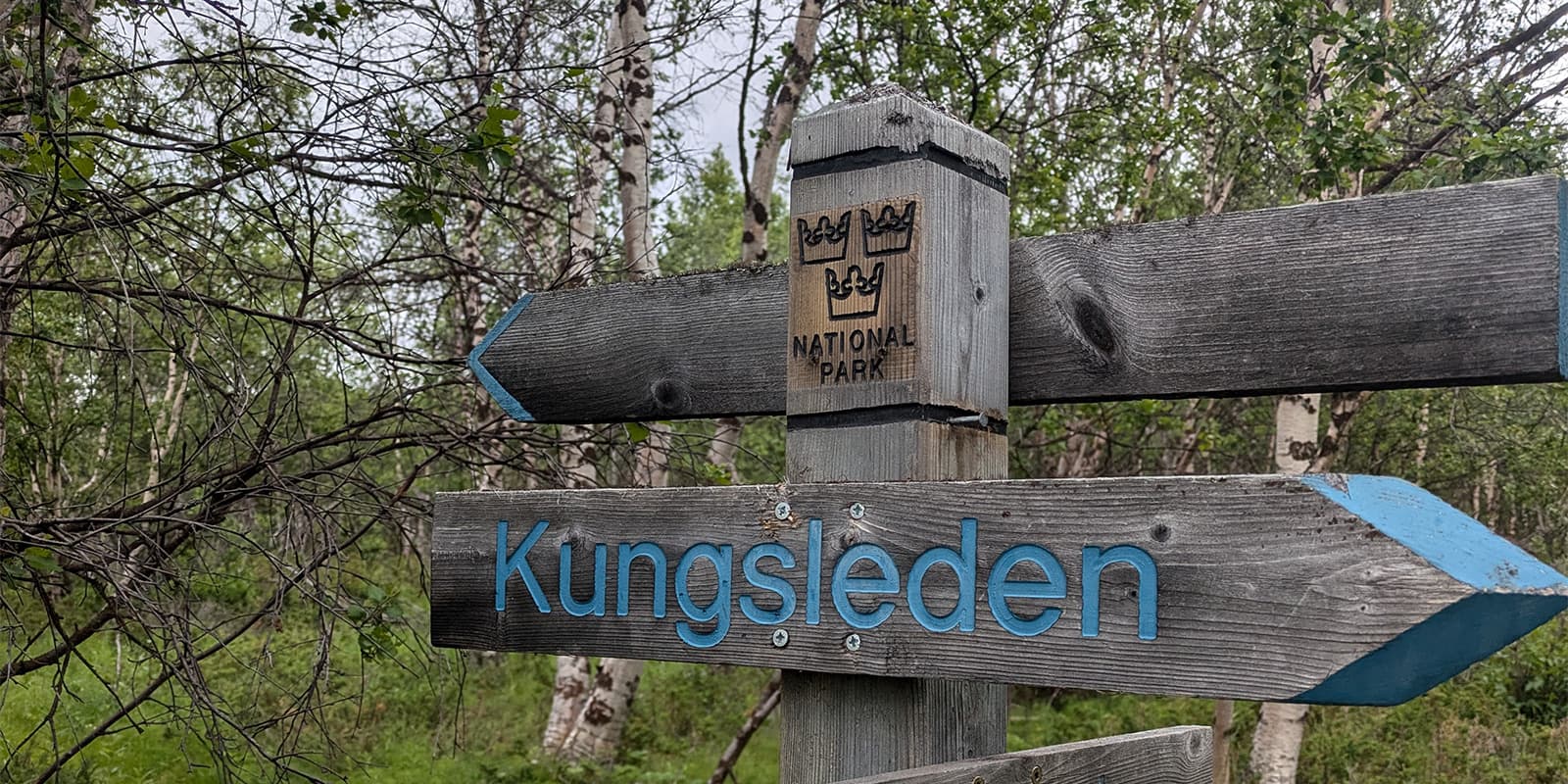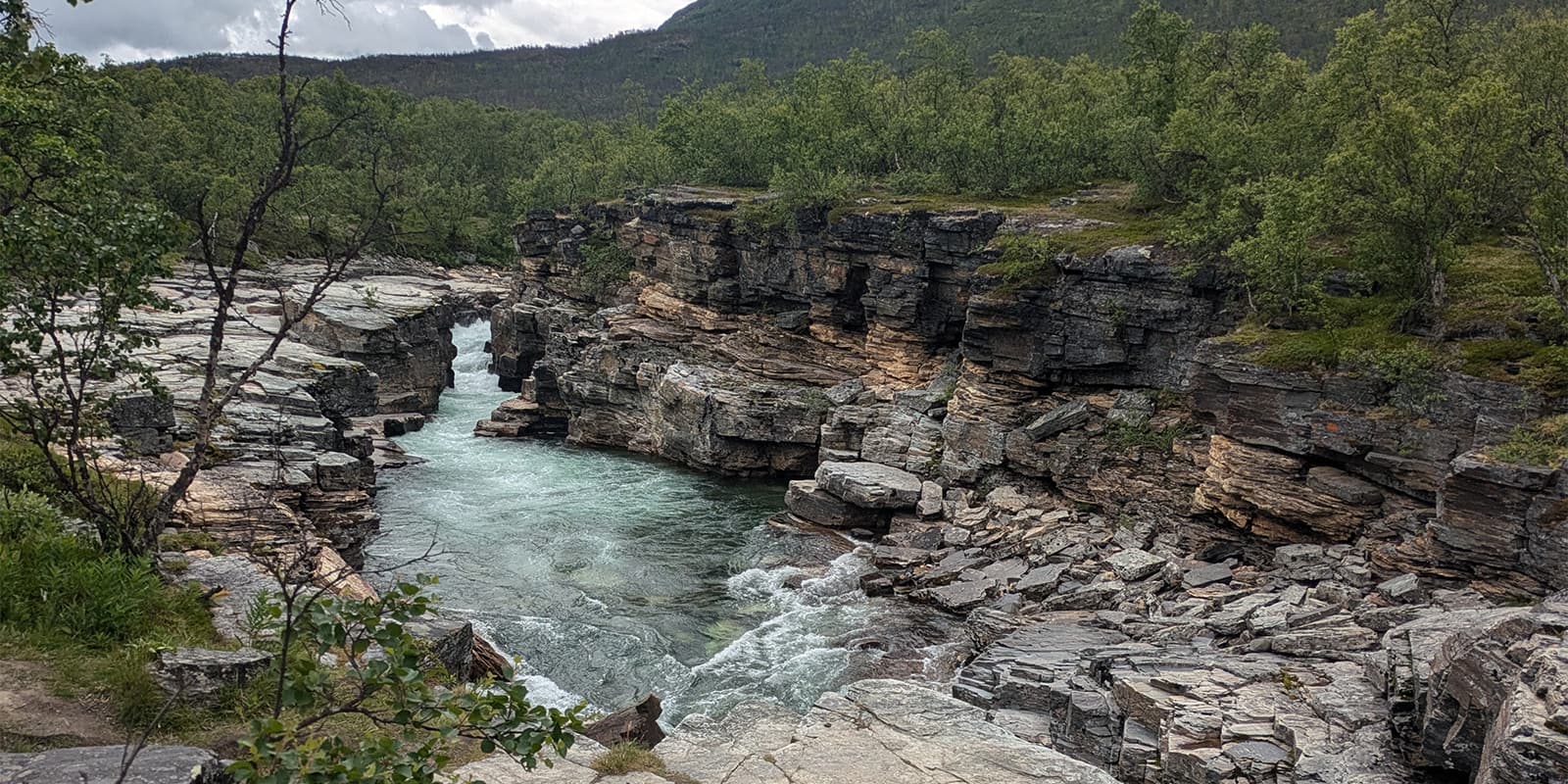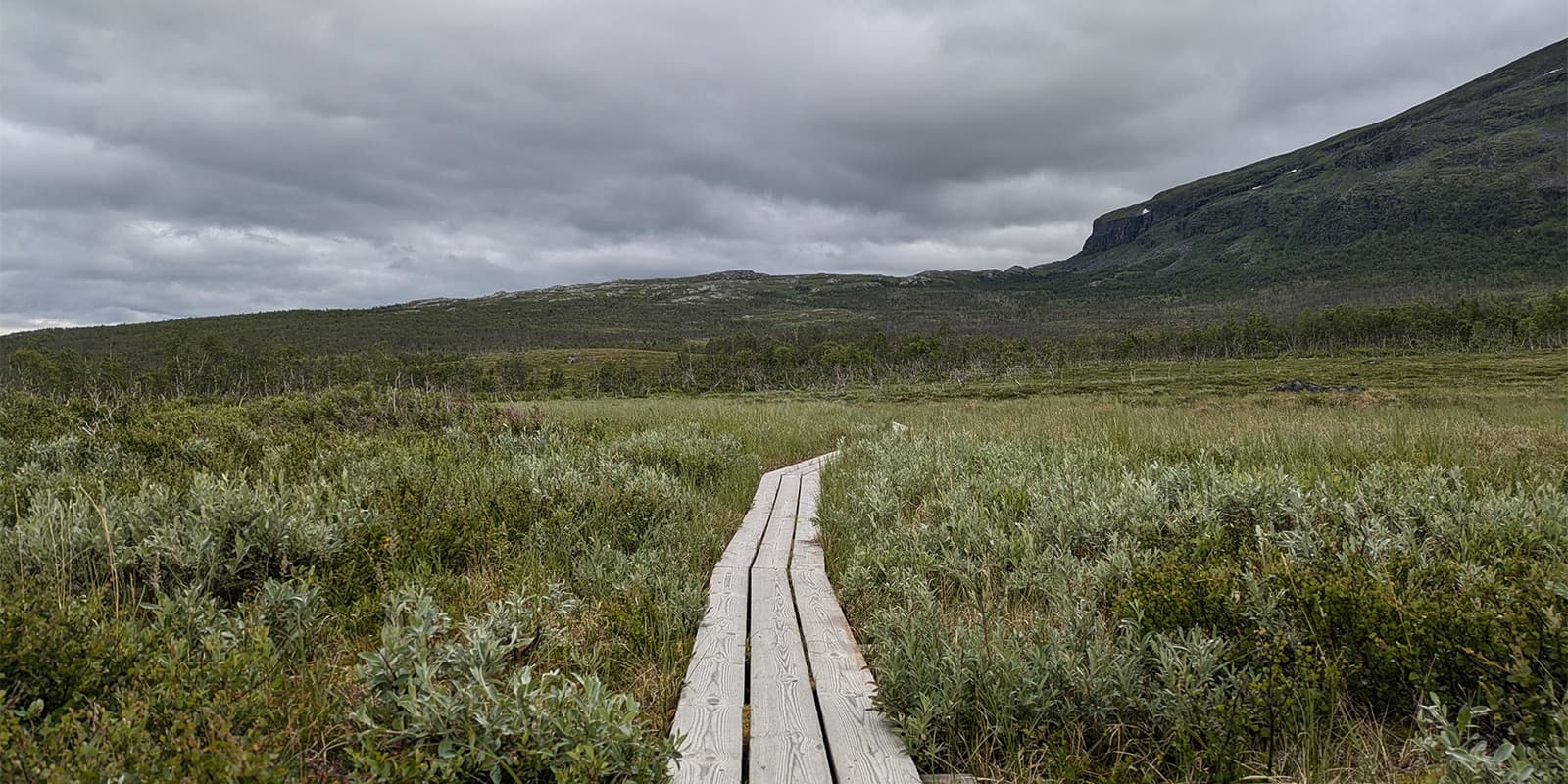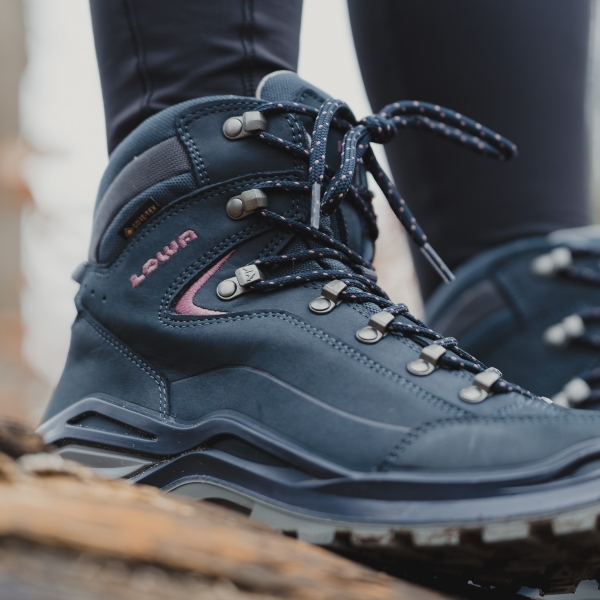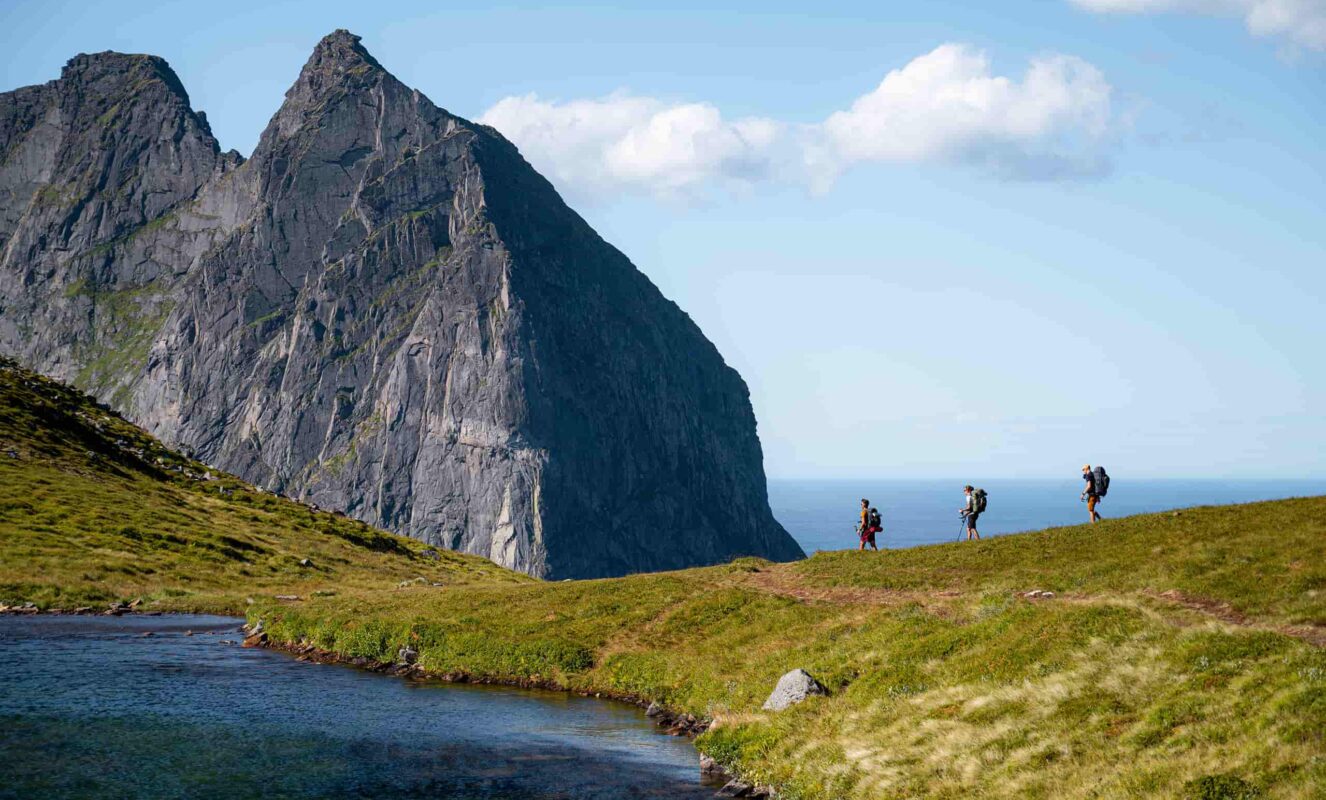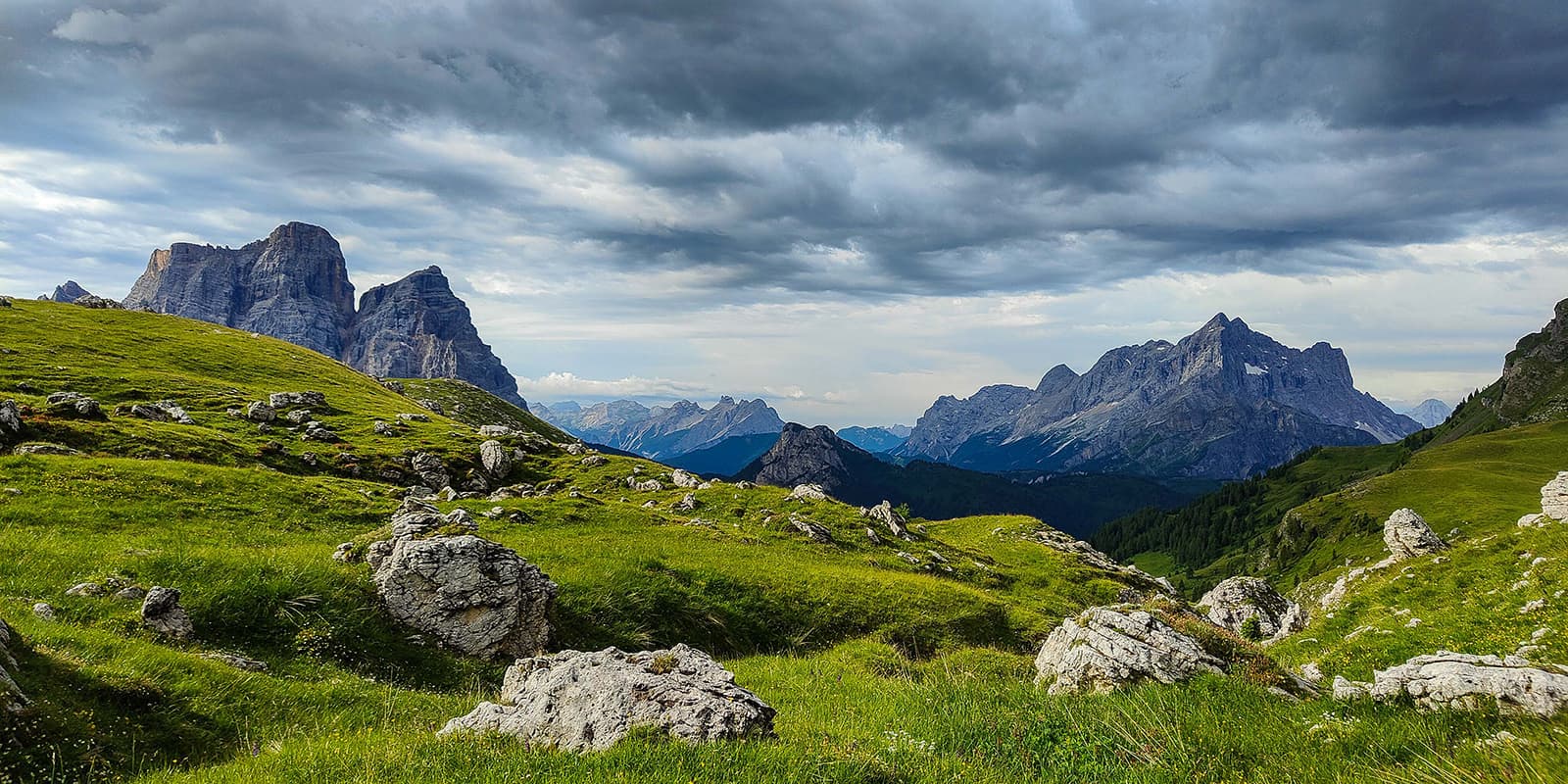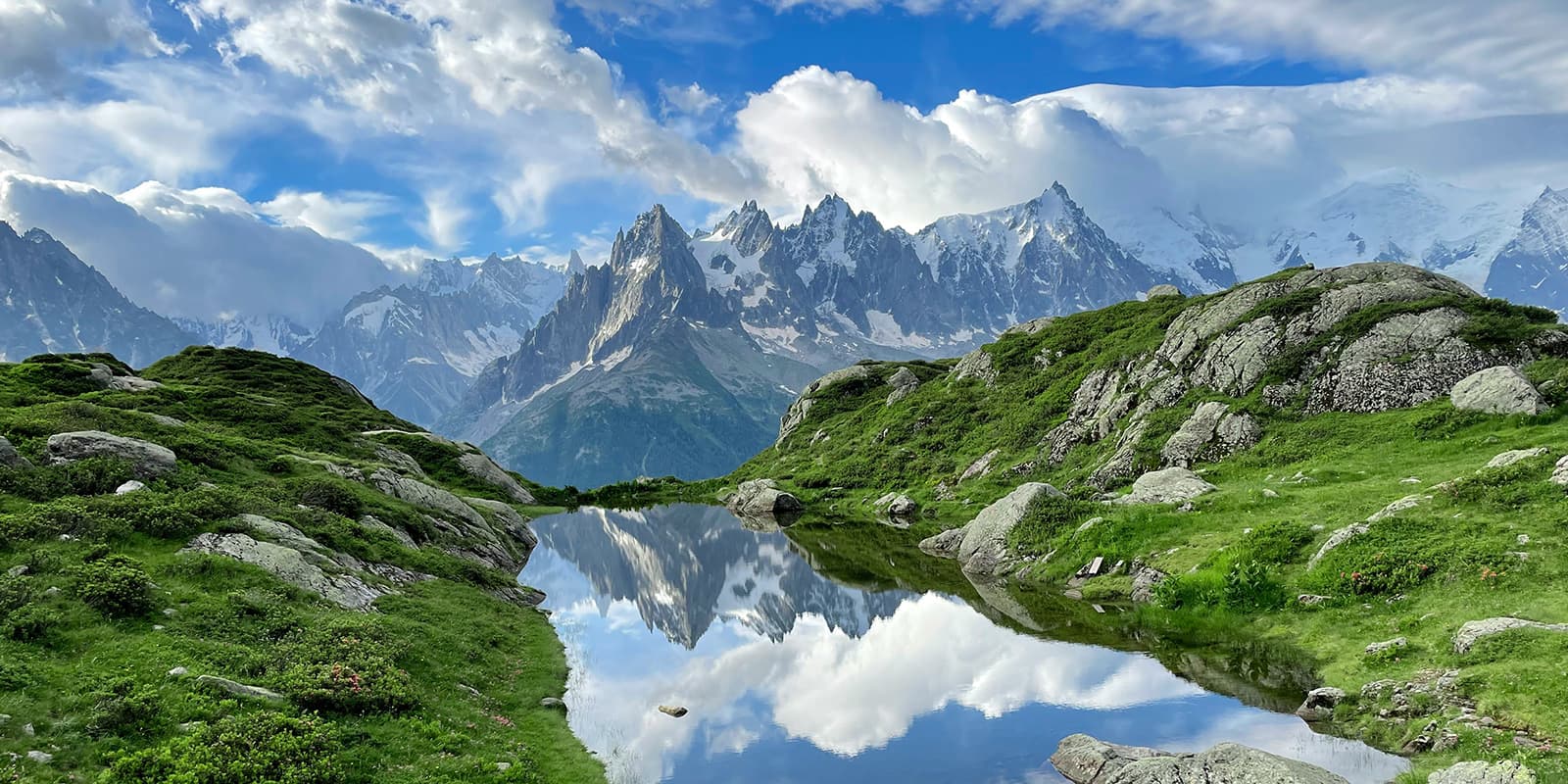Next up is Singi/Nikkaluokta to Vakkotavare. At Singi you have the option to make the detour to Kebnekaise or move on directly to Vakkotavare. The landscape is barren and wild, running on and off mountain plateaus. At the Teusajaure Lake, your first of many boat crossings awaits: pull up your sleeves and row over yourself, or just pay the hut keeper to cross on the motor boat.
Thru-hikers will start the third section of Kungsleden with a bus ride to Saltoluokta, the entry point of this stage. The trail is interrupted at Vakkotavare by a road and another lake crossing. For section hikers, Saltoluokta is easily reachable from Galliväre. This definitely is a very wild section of Kungsleden, running partly through the untouched Sarek National Park, offering spectacular views of its often snow-peaked mountains. A lot of lake crossings are to be made by rowing or speed boat.
As a thru-hiker, make sure to resupply at Kvikkjokk mountain station, the end of section three, because there are no manned mountain huts on the fourth section between Kvikkjokk and Ammarnas; camping gear is essential for this section. The remoteness and lack of huts make this a very quiet and likely the least-traveled part of the trail, almost only hiked by thru-hikers. Not all streams have bridges here, though some may have privately owned boat owners you can pay to go over. The trail goes up and down a lot, through valleys and over plateaus, making this a more challenging but at the same time a very unique section of the trail. It has views of the desolate landscape that stretches for miles and miles.
The last and southernmost section of Kungsleden runs from Ammarnäs to Hemavan. This fifth section is a lot greener, often running through long stretches of moorland and birch forest. A diverse fauna and flora characterize this part of the trail, as you cross the extraordinary Vindelfjällen nature reserve, one of the largest protected natural areas in Europe.



